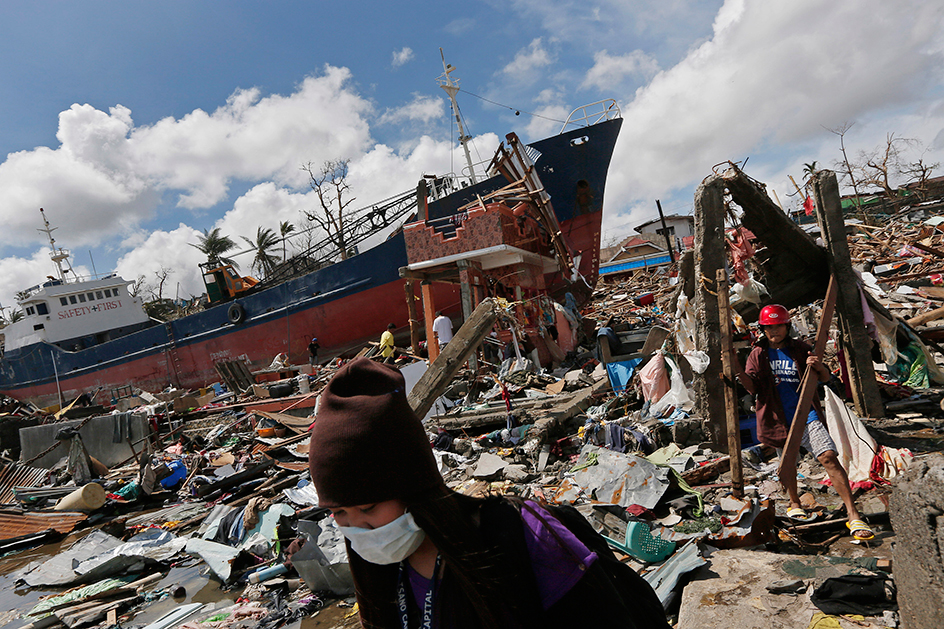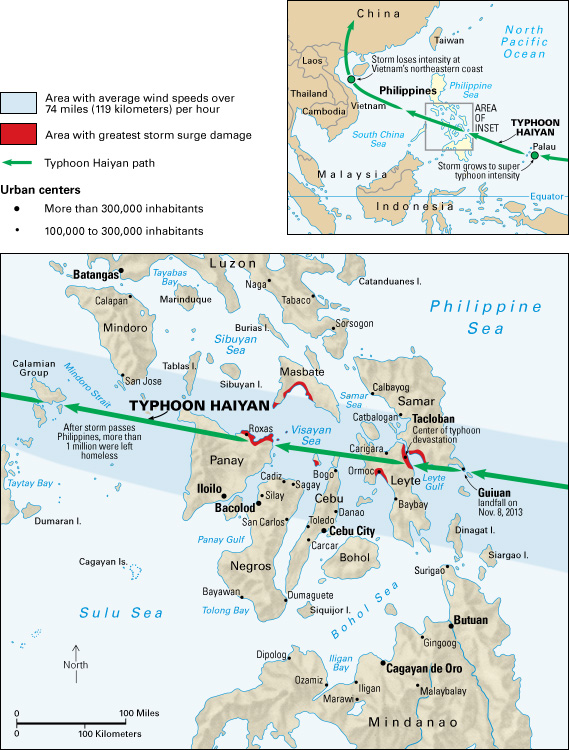Typhoon Haiyan, << HY an >>, was a powerful storm that struck the Pacific island nation of the Philippines in November 2013. A typhoon is a kind of violent cyclone that occurs in the northwestern Pacific Ocean. Typhoon Haiyan devastated coastal areas of the Philippine islands of Samar and Leyte, killing thousands of people. Some of the greatest devastation and loss of life was caused by the typhoon’s storm surge. A storm surge is a rapid rise in sea level that occurs when winds drive ocean waters ashore. After striking the Philippines, the typhoon continued to the west and north. It forced the evacuation of hundreds of thousands of people in northern Vietnam.

Typhoon Haiyan began as a tropical depression near the Caroline Islands in the western Pacific Ocean on November 3. A tropical depression is a low-pressure area surrounded by winds moving in a circular pattern. The storm continued west-northwest, gaining strength and speed. On November 5, its winds reached speeds of more than 74 miles (119 kilometers) per hour—high enough for the storm to be categorized as a typhoon.
During the night of November 6 to 7, the storm passed north of the island nation of Palau and entered the Philippine Sea. By that time, its winds had grown to super typhoon intensity—the strongest rating, at more than 150 miles (241 kilometers) per hour. Meteorologists stated that the typhoon’s winds, at their strongest over the ocean before reaching the Philippines, may have reached up to 195 miles (315 kilometers) per hour.

On the morning of November 8, Typhoon Haiyan made landfall over the town of Guiuan, on the southeastern tip of Samar Island. The storm soon struck the city of Tacloban, on nearby Leyte Island. The typhoon’s greatest devastation occurred there. Storm surges may have climbed as high as 20 feet (6 meters), carrying debris-filled water up to 1/2 mile (0.8 kilometer) inland. Few buildings in the path of the storm surge remained intact. Philippine government officials estimated that the storm killed about 6,300 people and left more than 1,000 others missing. Many people drowned or were crushed by collapsing buildings. More than 1 million were left homeless.
The storm then continued to the northwest. It decreased in intensity before passing south of Taiwan and striking Vietnam’s northeastern coast. The storm died out over central China during the week of November 10.
Philippine emergency workers, international relief agencies, and governments from around the world hurried to bring aid to hard-hit areas. However, the destruction made relief efforts difficult. Days passed before significant amounts of emergency supplies arrived in Tacloban and nearby communities.
The Japan Meteorological Agency, which identified the storm on November 3, gave the typhoon its international name, Haiyan. The national weather bureau of the Philippines, which uses its own storm-labeling system, called the storm Typhoon Yolanda. Officials said that the typhoon was one of the most destructive natural disasters in Philippine history.
See also Cyclone; Philippines; Typhoon.
